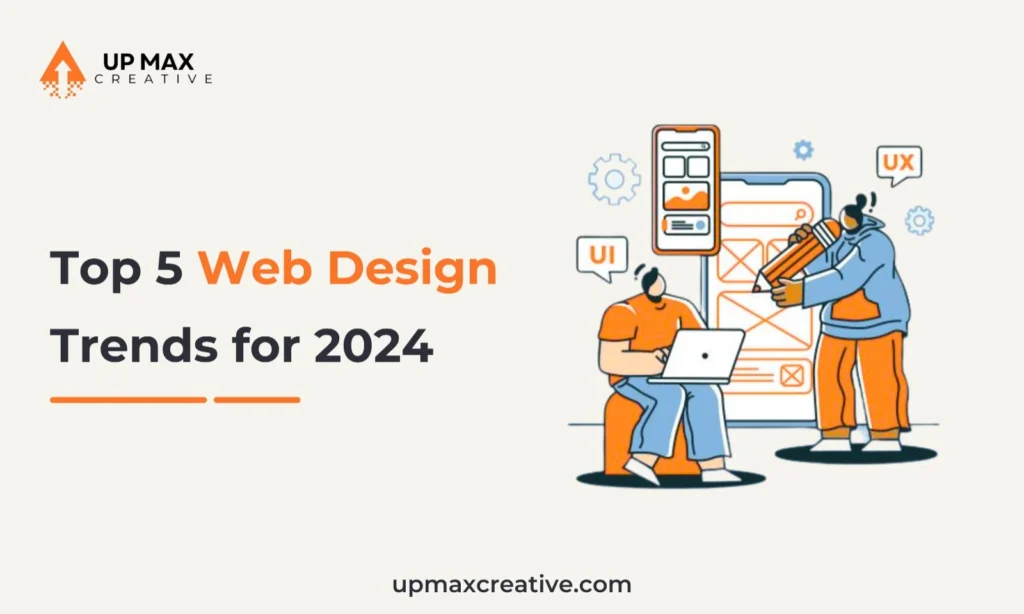
Web design continues to evolve, and in 2024, staying ahead of the curve is crucial for businesses looking to convert visitors into customers. A well-designed website not only catches the eye but also creates a seamless user experience that guides visitors through the buyer’s journey. Below are five key web design trends for 2024 that can help your site stand out and boost conversion rates.
1. AI-Driven Personalization
Artificial intelligence (AI) is becoming a vital tool in creating personalized user experiences. In 2024, web design will be more focused on integrating AI to deliver tailored content, recommendations, and offers based on user behavior. Whether it’s showing products similar to what a visitor previously viewed or suggesting content that matches their interests, personalization can greatly enhance user engagement and improve conversion rates. For example, e-commerce sites can use AI to recommend products based on past purchases or browsing history. Content-heavy websites can suggest relevant articles or resources depending on what the visitor has already explored.
The key benefit of AI-driven personalization is that it makes the user feel seen and understood, which builds trust and encourages action. Personalized experiences are more likely to keep visitors on the site longer, increasing the likelihood of conversions.
2. Immersive 3D Elements
With advances in web technology, 3D elements are becoming more accessible and are set to be a major trend in 2024. Immersive 3D graphics can bring products and experiences to life on websites, offering a more engaging and interactive user experience. For product-based businesses, this can mean incorporating 3D product previews or virtual try-ons, allowing customers to see items from every angle before making a purchase. For other industries, 3D elements can enhance storytelling or demonstrate complex concepts in a visually appealing way.
When used thoughtfully, 3D design can make a website more memorable, but it’s important not to overdo it. The goal is to enhance the user experience, not overwhelm it. Ensuring that 3D elements do not slow down load times is also crucial for maintaining conversions.
3. Minimalist and Clean Layouts
Simplicity in web design has always been a staple, but in 2024, minimalist designs are taking on new forms. Clean, uncluttered layouts help reduce cognitive load, making it easier for users to find what they’re looking for and take action. This is particularly important for mobile-first design, where screen space is limited. Minimalism doesn’t mean bland or boring. It means stripping away unnecessary elements and focusing on what truly matters—clear navigation, compelling calls-to-action (CTAs), and high-quality content. With fewer distractions, users are more likely to focus on key areas of your website, increasing the chances of conversion.
Whitespace, also known as negative space, plays a huge role in minimalist designs. By giving elements room to breathe, you can direct attention where it’s needed, whether it’s a product description, a signup form, or a CTA button.
4. Micro-Animations for User Engagement
Micro-animations are small, subtle animations that guide users through your website or provide feedback when they interact with certain elements. In 2024, these animations will become even more refined and will be used to enhance the user experience without being intrusive. For example, a micro-animation might be used to make a button pulse slightly when it’s hovered over, indicating that it’s clickable. Another might show a loading animation that reassures users their request is being processed. These small touches can make the user journey smoother and more intuitive.
Micro-animations can also serve to highlight important content or guide users to key actions, such as making a purchase or signing up for a newsletter. When done correctly, these animations provide a delightful experience that can keep users engaged, leading to higher conversion rates.
5. Sustainability and Eco-Friendly Design
As more people become aware of environmental issues, businesses are focusing on creating sustainable websites. In 2024, eco-friendly web design is set to become a significant trend, with more companies looking for ways to reduce their websites’ carbon footprint. Eco-friendly design doesn’t just refer to the content of the site—it also impacts the technical aspects. For instance, websites that are optimized for fast loading times and minimal data usage are more energy-efficient. Simple designs with fewer high-resolution images or resource-heavy elements can significantly reduce a site’s energy consumption, especially for mobile users.
Moreover, including sustainability in your branding can resonate with eco-conscious consumers. Highlighting your company’s commitment to green practices or featuring sustainability in your web design’s messaging can not only help the environment but also build trust with potential customers.
Conclusion
In 2024, web design will focus on creating seamless, personalized experiences that guide users to take action. By incorporating AI-driven personalization, immersive 3D elements, minimalist layouts, micro-animations, and sustainable practices, businesses can stay ahead of the curve and increase conversions. Whether you’re a startup or an established business, embracing these design trends can help you create a website that not only looks great but also drives results.